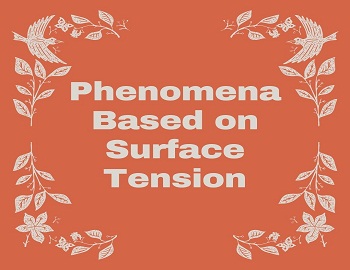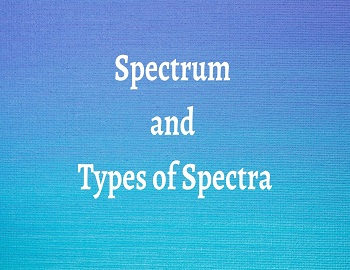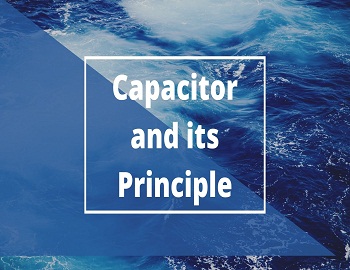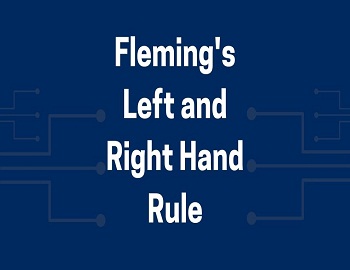Table of Contents
Floating Bodies:
When a body is immersed in a fluid, it is acted upon by two forces-
- The weight W of the body acting downwards.
- The upthrust FB due to the liquid acting upwards.
If the weight of the body is greater than the buoyant force, the body will sink.
If the weight of the body is less than the buoyant force, the body rises, and more and more of its portion emerges out. The buoyant force, therefore, decreases. When the buoyant force reduces to the weight of the body, equilibrium is reached and the body floats.
It is to be noted that for equilibrium the weight of the body and the buoyant force must act on the same vertical line i.e., the centre of gravity of the body and centre of gravity of the displaced liquid must be in the same vertical line.
Also for stable equilibrium, it is essential that the centre of gravity of the body should be lower than the meta-centre — the meta-centre being that point on the central line, where the vertical line passing through the centre of buoyancy cuts the central line.
Stability of Equilibrium:

(1) For Floating Bodies/Surface Vessels- Suppose a floating body is tilted a little to one side or the other from the original equilibrium position. Since the shape of the displaced liquid changes, the centre of buoyancy shifts a little and now it may not be in that vertical line that passes through the centre of gravity of the body. The vertical line drawn from the new centre of buoyancy B’ meets the old vertical (central) line in a point M, which is called the meta central of the floating body as shown above.
Depending on whether the meta centre coincides with, lies above, or below the centre of gravity of the floating body, the equilibrium of the floating body is neutral, stable, or unstable.

Stable Equilibrium- Suppose a boat is heavily loaded at the bottom as shown above in Figure (b). The centre of gravity G of the body is thus lowered. The centre of buoyancy B is then above G. When the boat is slightly tilted, the centre of buoyancy shifts to B’. Now if the meta centre M is above G, the weight and buoyant force will form a couple that will bring back the floating body to its original position.
Unstable Equilibrium- Suppose the boat is heavily loaded at the top. The centre of gravity G is then shifted up. The centre of buoyancy falls below G. Now if the floating body is slightly tilted, its center of buoyancy shifts to B’, and if the meta centre M lies below G, clearly the couple formed due to weight and buoyant force will turn the boat further away from the original force as shown in Figure (c). This situation, therefore, corresponds to the unstable equilibrium.
Neutral Equilibrium- If the floating body happens to be spherical in shape, a small tilt will not bring any change and the centre of gravity will remain coincident with the centre of buoyancy. It is, therefore, in a neutral equilibrium.
(2) For Submerged Objects- The above results are true for surface vessels like ships, which float on the surface of water. However, if the floating body happens to be a body like a balloon or submarine etc., which remains completely submerged in air or water, the guiding principle for stability is that the centre of buoyancy must be above the centre of gravity.
Some Illustrations on Floating Bodies:
(1) Flotation of a Ship- A solid piece of iron sinks in water but an iron ship floats. This is because the ship is hollow and has a concave shape. It is capable of displacing so much volume of water that its weight is equal to the weight of the ship with her contents.
(2) Submarines- It is a device that can be made to float or sink in water. This action is achieved by controlling its buoyancy. For this, water is either ejected or admitted into the tanks. When it is required to dive, water is admitted into its tanks but when it is required to rise to the surface water is ejected out from the tanks.
(3) Swimming- The weight of the human body is lesser than that of an equal volume of water. Apparently, therefore, a human body should float on the surface of water. But this does not happen ordinarily because the head is relatively much heavier. Therefore, for swimming one has to learn an art of keeping the head above the surface of water.
Sea water has a greater density than river water. The buoyancy experienced by swimmer in sea is, therefore, comparatively larger so it is a much easier to swim in the seawater. The heads of quadruped animals are usually not so heavy, therefore, they can swim more easily.
(4) Balloon- Archimedes’ principle holds good for gases also. If it can be so arranged that the weight of a balloon with its contents is less than the weight of displaced air, then the balloon would ascend in air.
A balloon consists of a large silk bag which is varnished to make it airtight. It is then filled with hydrogen, helium, or some other gas. When left free, the balloon rises. During the start, the balloon is not fully inflated because as it goes up the density of air decreases and the buoyant force thereby decreases. Consequently, the balloon may expand, beyond the safety limit.
(5) Iceberg- Big pieces of ice float on sea water with only a small portion exposed. They are, therefore, great hazards for navigation.
To find the fraction x of the volume that remains inside, let the total volume of the iceberg be V. If the density of ice and water are ρ and d respectively, then
| weight of iceberg = Vρg weight of water displaced = xVdg For floatation, xVdg = Vρg or x = ρ/d Since ρ = 917 kg m-3 and d = 1025 kg m-3 for seawater, x = 8/9 i.e., an iceberg floats with only one-ninth of its volume exposed. |
(6) Melting of Floating Ice- Suppose a piece of ice is floating in a beaker of water. What happens to the level of water in the beaker as the ice starts melting?
Let the volume of ice be V and the fraction inside water be x. If the density of ice and water are respectively ρ and d, then we have
| Volume of ice inside water = xV = (ρ/d)V (as shown above) ……….(i) Further, Mass of ice = M = ρV Mass of water produced = M = ρV Volume of water produced = M/d = ρV/d ……….(ii) Which is the same as (i). Therefore, there would be no change in the level of water. This happens because ice contracts on melting. The entire mass of ice on melting produces water which has just the same volume as the volume of that portion of ice that was inside water. |









Comments (No)